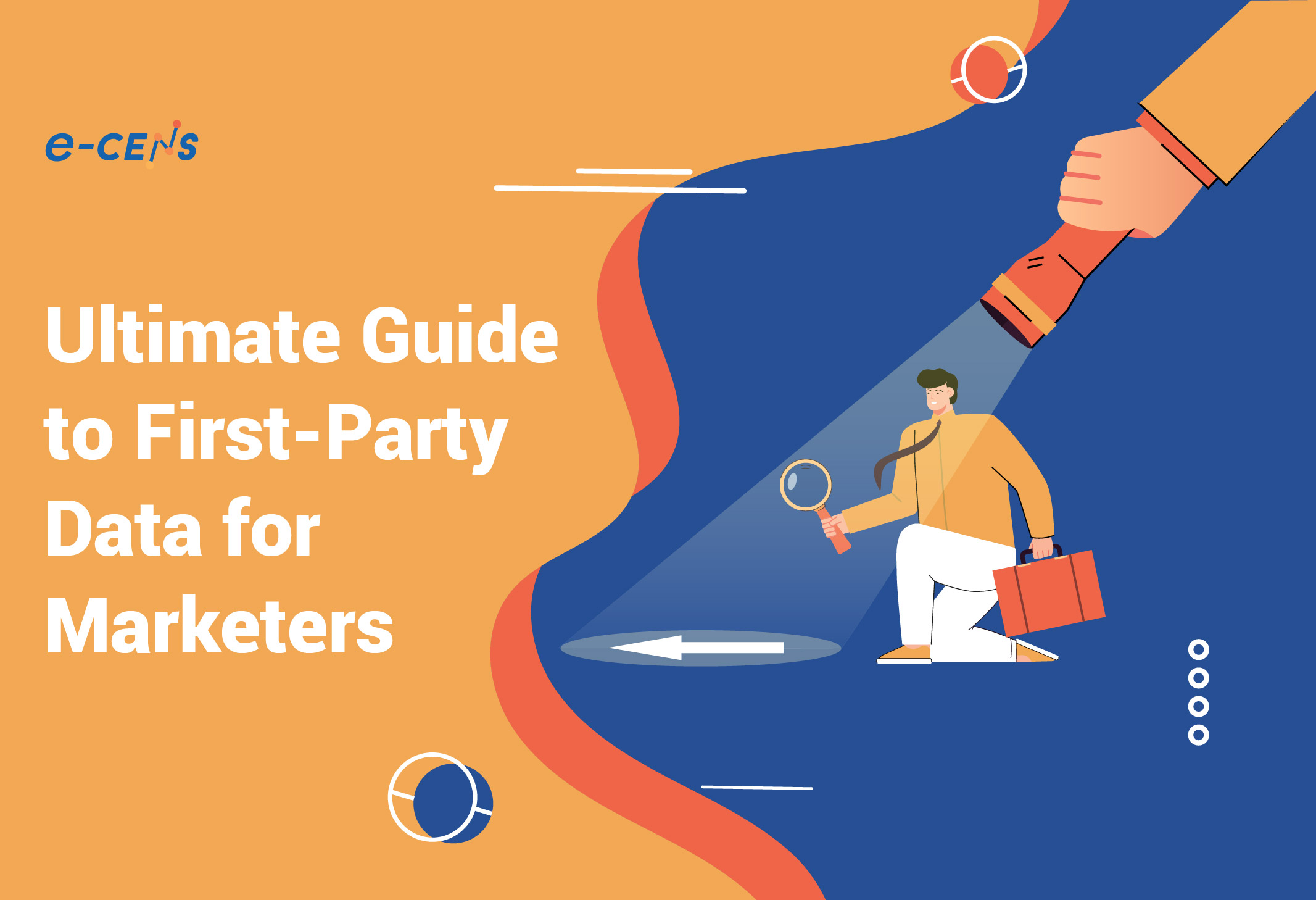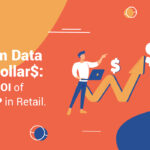The marketing landscape has undergone a seismic shift. Customer privacy concerns are paramount, and data regulations are constantly evolving. In this new environment, a single truth has become clear for brands: first-party data is no longer a luxury, it’s the cornerstone of success.
Over the decades, we’ve witnessed countless marketing trends come and go. But the importance of owning your customer data has never been higher.
A recent Acquia report underscores this reality, revealing that 88% of marketers consider first-party data critical.
Why the sudden surge in significance? First-party data offers a treasure trove of insights, empowering businesses to:
- Craft Hyper-Targeted Campaigns: Gone are the days of generic messaging. By leveraging first-party data, you can precisely target your audience, ensuring your communication resonates deeply with specific customer segments.
- Forge Lasting Customer Connections: Personalization fueled by first-party data fosters deeper connections with your customers, building trust and loyalty that transcends fleeting marketing campaigns.
- Boost Marketing ROI: Data-driven decision-making is the ultimate performance enhancer. First-party data empowers you to optimize campaigns and dramatically improve your marketing return on investment.
But the benefits extend far beyond campaign performance. Responsible use of first-party data fosters trust with your customers. Transparency in data collection and usage builds a positive brand image, while adhering to privacy regulations like GDPR and CCPA demonstrates your unwavering commitment to customer security.
Understanding First-Party Data
First-party data is the information collected directly from your customers and audiences through their interactions with your website, mobile app, social media channels, or other owned platforms.
This data is unique, accurate, and highly valuable because it comes straight from the source. It provides a deep understanding of your customers’ preferences, behaviors, and needs.
Examples of first-party data include:
- Demographic information: Age, gender, location, education level, and more.
- Behavioral data: Website interactions, browsing patterns, purchase history, and engagement metrics.
- Transactional data: Order details, payment information, and customer lifetime value.
- Preference data: Subscription preferences, content interests, and communication channel preferences.
- Feedback and reviews: Customer ratings, survey responses, and support inquiries.
First-party data stands out from other data types, such as second-party (shared by partners) and third-party data (aggregated from external sources), due to its accuracy, reliability, and direct connection to your audience.
Collecting First-Party Data
Effective data collection is the foundation for leveraging first-party data in your marketing efforts. Here are some proven methods for gathering valuable customer insights:
- Website and mobile app analytics: Implement tracking tools to capture user interactions, page views, clicks, and conversions across your digital channels.
- Customer account registrations: Encourage users to create accounts on your website or mobile app, allowing you to collect preference data during the registration process.
- Email subscriptions and surveys: Offer newsletter sign-ups, feedback forms, and surveys to gather explicit preferences and opinions from your audience.
- Social media integrations: Integrate your website with social media platforms to track shares, comments, and interactions related to your content.
- Customer Relationship Management (CRM) systems: Centralize customer data from various sources, including sales interactions, support inquiries, and purchase histories.
- Point-of-sale (POS) systems: These systems capture transactional data, such as purchase details and customer loyalty information, from your physical or online stores.
When collecting customers’ data, it’s essential to ensure transparency and obtain proper consent. Clearly communicate how the information will be used and provide options for users to control their data-sharing preferences.
Leveraging First-Party Data for Marketing Success
The power of first-party data goes far beyond mere collection. It’s the fuel that ignites a data-driven marketing engine, propelling you towards exceptional customer experiences and undeniable results. Here’s how:
- Personalized Experiences: Imagine crafting marketing messages like bespoke suits – perfectly tailored to each individual. First-party data reveals customer preferences and behaviors, allowing you to personalize content, product recommendations, and overall interactions. This laser focus not only drives engagement and conversions but also builds trust and fosters long-lasting relationships.
- Smarter Segmentation and Targeting: Gone are the days of scattershot marketing. First-party data becomes your targeting superpower. You can segment your audience based on demographics, interests, behavior patterns, and purchase histories. This laser focus allows you to create highly targeted campaigns that resonate with specific segments, resulting in maximized return on investment (ROI) and skyrocketing engagement.
- Customer Retention on Autopilot: Retaining existing customers is your golden ticket to sustainable growth. First-party data unlocks the secrets to their preferences, allowing you to anticipate their needs and deliver tailored experiences that keep them engaged and loyal. Leverage purchase histories and feedback to create personalized loyalty programs, targeted promotions, and proactive support initiatives that transform customers into brand advocates.
- Cross-Selling and Upselling with Confidence: First-party data empowers you to identify upselling and cross-selling opportunities that resonate. By analyzing customer purchase histories and browsing behaviors, you can recommend complementary products or services that enhance their brand experience. This not only increases customer lifetime value but also fosters a deeper connection with your audience.
- Ad and Email Marketing with Precision: Imagine crafting ad campaigns and email blasts that hit the bullseye every time. First-party data allows you to segment your audience based on preferences, behaviors, and interactions. This empowers you to create highly targeted campaigns that resonate with each individual. Additionally, you can leverage behavioral triggers like abandoned carts or recent purchases to deliver timely and relevant messages that drive conversions.
- Product and Service Optimization – Data-Driven Decisions: First-party data offers an invaluable window into how customers interact with your products and services. By analyzing usage patterns, feedback, and customer journeys, you can identify areas for improvement and prioritize features that resonate with your audience. This empowers you to continuously iterate and refine your offerings, ensuring they consistently exceed customer expectations.
- A Seamless User Experience: A frictionless and personalized user experience is the cornerstone of customer satisfaction. First-party data allows you to tailor website content, navigation, and recommendations based on individual preferences and behaviors. By understanding your customers’ needs and pain points, you can optimize their journey, streamline processes, and deliver a truly exceptional experience across all touchpoints.
- Targeted User Acquisition: First-party data doesn’t just retain existing customers, it fuels user acquisition efforts. By analyzing the characteristics and behaviors of your existing customer base, you can identify similar audience segments and create targeted campaigns that resonate with potential new customers. This data-driven approach ensures your acquisition efforts are laser-focused and effective, attracting high-quality leads that are more likely to convert.
- A/B Testing on Steroids: A/B testing is a powerful tool for optimizing your marketing campaigns, but first-party data takes it to the next level. By providing valuable insights into customer preferences and behaviors, you can create and test variations of your campaigns with surgical precision. Analyze the results to identify the most successful strategies and continuously refine your approach for maximum impact.
Data Privacy and Ethical Considerations
As the importance of data privacy continues to grow, it’s crucial to prioritize ethical data collection and usage practices. Regulations such as the General Data Protection Regulation (GDPR) and the California Consumer Privacy Act (CCPA) have set strict guidelines for how businesses handle personal information.
To ensure compliance and maintain customer trust, it’s essential to:
- Obtain explicit consent: Clearly communicate how you plan to use customer data and provide options for users to control their data sharing preferences.
- Implement robust data security measures: Safeguard customer data with encryption, access controls, and other security protocols to prevent unauthorized access or breaches.
- Respect data minimization principles: Only collect and retain the data necessary for your stated purposes, minimizing the risk of data misuse or exposure.
- Foster transparency: Be transparent about your data collection and usage practices, allowing customers to make informed decisions about sharing their information.
- Prioritize ethical data practices: Ensure that customer data is used responsibly and for the benefit of both your business and your customers, aligning with ethical principles and values.
By prioritizing data privacy and ethical considerations, you not only comply with legal requirements but also build trust with your customers, fostering long-lasting and mutually beneficial relationships.
What is the difference between first-party, second-party, and third-party data?
- First-party data is data that a company collects directly from its customers and audiences through various interactions and touchpoints.
- Second-party data is another company’s first-party data that is shared or sold directly between two parties through a trusted partnership or collaboration.
- Third-party data is data collected, aggregated, and sold by entities other than the one that initially collected the data and the end user, often by data brokers or aggregators.
Why is first-party data considered more valuable than other types of data?
First-party data is considered more valuable because it comes directly from a company’s customers and audiences, making it accurate, reliable, and insightful. It provides a direct understanding of customer preferences, behaviors, and interactions, enabling more effective targeting and personalization.
What is zero-party data, and how is it different from first-party data?
A: Zero-party data refers to information intentionally and proactively shared by individuals with a company or organization. Unlike first-party data, which is observed or collected through implicit actions, customers provide zero-party data themselves, often in the form of preferences, intentions, or personal information. Zero-party data is highly valuable as it is willingly shared by users.
How can businesses ensure they are collecting and using first-party data ethically and in compliance with privacy regulations?
Businesses should implement robust consent management systems, explore privacy-enhancing technologies, implement data anonymization techniques, and emphasize ethical considerations in data collection and usage. They should also stay informed about changes in regulations, technology, and consumer expectations related to data privacy.
Can first-party data be used for user acquisition strategies?
Yes, first-party data can be leveraged for effective user acquisition strategies. By studying the characteristics of their existing customer base, businesses can identify and attract similar audiences through targeted campaigns, increasing the efficiency of user acquisition efforts.
How can first-party data be used for product and service optimization?
First-party data allows businesses to understand customer experiences, identify recurring themes, and pinpoint areas for improvement. Companies can then refine their offerings, implement iterative testing strategies, optimize customer journeys, and enhance customer support services based on these insights.







